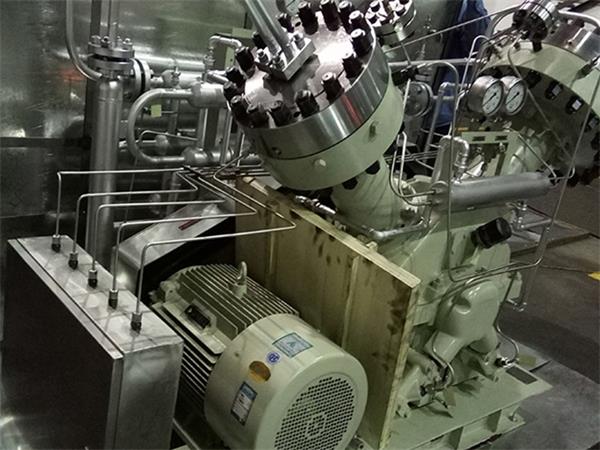Diaphragm compressors, as a special type of compressor, play an important role in many industrial fields. The following is a report on the selection guide and market research analysis of diaphragm compressors.
1、 Purchase Guide
1.1 Understand application requirements
Firstly, it is necessary to clarify the usage scenario of the compressor and the required gas type, pressure, flow rate, and other parameters. The requirements for compressors vary greatly among different industries and processes.
For example, the chemical industry may need to handle corrosive gases, while the food industry has extremely high requirements for hygiene standards.
1.2 Performance parameter evaluation
Pressure range: Ensure that the compressor can provide the required higher and lower pressures.
Flow rate: Determine the appropriate flow rate based on production needs to avoid energy waste or insufficient production caused by being too large or too small.
Compression ratio: Consider the initial and pressure ratio of the gas to select the appropriate model.
1.3 Reliability and durability
Check the manufacturing quality of the compressor, including material selection, machining accuracy, and assembly process.
Understand the brand’s reputation and user feedback in the market, and choose products with good reputation.
1.4 Sealing performance
The core advantage of diaphragm compressors lies in their excellent sealing performance, which prevents gas leakage.
Check the material and design of the seals to ensure their sealing performance during long-term operation.
1.5 Convenience of maintenance and upkeep
Choose a compressor with a well-designed structure that is easy to disassemble and replace components, in order to reduce maintenance costs and downtime.
Understand the after-sales service and technical support provided by the manufacturer.
1.6 Energy efficiency
Choosing energy-saving compressors can reduce energy consumption and operating costs during long-term operation.
1.7 Cost budget
Taking into account the purchase cost, installation cost, operating cost, and maintenance cost, choose products with high cost-effectiveness.
2、 Market research and analysis
2.1 Market size and growth trend
In recent years, with the development of industries such as chemical, petroleum, and electronics, the diaphragm compressor market has shown a stable growth trend.
Especially in fields with high requirements for gas purity and sealing, the demand for diaphragm compressors is constantly increasing.
2.2 Main brands and competitive landscape
There are some well-known brands in the market that have advantages in technology research and development, product quality, and market share. Meanwhile, some emerging brands are gradually emerging through technological innovation and price advantages, leading to increasingly fierce market competition.
2.3 Price range
The price varies depending on the specifications, performance, and brand of the compressor.
Small diaphragm compressors may cost tens of thousands of yuan, while large, high-performance equipment may reach hundreds of thousands of yuan or even higher.
2.4 Distribution of application areas
The chemical industry is the main application area of diaphragm compressors, used for transporting and compressing various chemical gases.
The oil and gas industry is used for gas pressurization and storage.
Used in the electronics industry for the compression and transportation of specialty gases.
2.5 Technological development trends
Intelligent control: achieve remote monitoring and automated operation, improve operational efficiency and reliability.
Efficient and energy-saving: adopting advanced design and materials to reduce energy consumption.
Miniaturization and integration: meet the demand for compact devices in some special application scenarios.
For example, when selecting a diaphragm compressor, a certain chemical enterprise fully considered the requirements of production process for gas purity and pressure, and chose a well-known brand of product. Although the initial investment was high, in the long run, it reduced the overall cost with its excellent reliability and energy-saving performance.
For example, an emerging electronics company, due to limited budget, chose a domestically produced diaphragm compressor with relatively low price but satisfactory performance, and ensured the stable operation of the equipment through good maintenance.
In summary, when choosing a diaphragm compressor, various factors should be comprehensively considered based on actual needs, while paying attention to market dynamics and technological development trends, in order to make wise decisions.
Post time: Sep-21-2024


